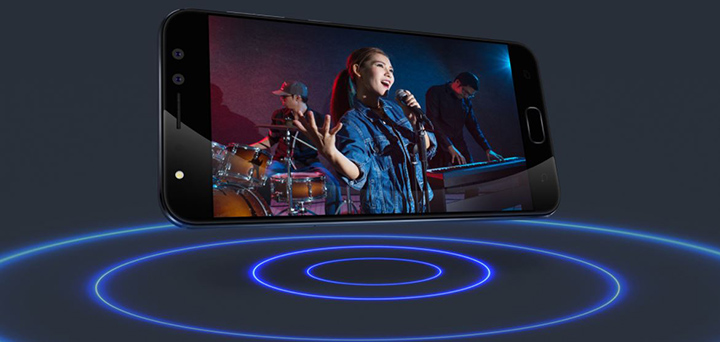The much-anticipated ASUS Zenfone 4 family was recently released. With its “We Love Photo” tagline, it’s apparent that these phones are heavily camera-centric. That’s why ASUS come up with the Zenfone Selfie 4 & Selfie 4 Pro for people who are selfie and “wefie”, a term coined by ASUS that means ‘group photo’, junkies. Enough blabber, let’s get to the run-through of these two.

Table of Contents

It may seem a bit unlikely for phones to sport a dual front camera (‘cos mostly it’s found on the rear), but ASUS made it possible. Both the Zenfone 4 Selfie and the Selfie 4 Pro sport a dual front camera with the former having a 20MP standard view + 8MP wide angle and the latter having 24MP standard view + 5MP wide angle front shooters.
The Zenfone 4 Selfie Pro‘s selfie cam has a larger aperture (f/1.8), which is clearly ideal for low light shots, has Sony’s flagship IMX362 image sensor, and is capable of shooting 4K selfie videos. The Zenfone 4 Selfie, on the other hand, trims down at f/2.0 and has ASUS SelfieMaster technology. Both phones have a ‘Softlight LED flash’ feature which softens skin’s texture and brings out true skin tones.

Not only do these smartphones rock on their front shooters, but their rear camera as well. Both the Zenfone Selfie 4 and the Zenfone 4 Selfie Pro sport a 16MP rear camera with dual-LED tone flash. The former comes with Phase Detection Auto-Focus (PDAF), while the latter is equipped with a Sony image sensor, ASUS Superpixel Engine, 0.03s PDAF, 4K UHD video recording, and EIS (electronic image stabilization).

Both smartphones sport a metallic unibody design, with the Zenfone 4 Selfie having a 2.5D curved glass display, and a glittering band. It comes in four colors: Mint Green, Sunlight Gold, Rose Pink, and Deepsea Black. The Zenfone 4 Selfie 4 Pro, on the other hand, has been built using Nano Molding Technology (NMT) and has 2.5D Gorilla Glass Screen (which appears to be visually frameless). It comes in three colors: Rouge Red, Sunlight Gold, and Deepsea Black.

ASUS packs both smartphones with powerful internals so you’re always at the top of your game. Powering the Zenfone 4 Selfie is a Qualcomm Snapdragon 430 octa-core processor, which is known to be power-efficient, and an Adreno 505 GPU. On the other hand, the Zenfone 4 Selfie Pro comes with Qualcomm Snapdragon 625, which reduces power consumption by 35% but still delivers maximum performance, and is paired with an Adreno 506 GPU.

Out of the box, the Zenfone 4 Selfie and the Zenfone 4 Selfie Pro run on ASUS’ new ZenU1 4.0 (Android 7.0 Nougat). The new UI is said to be much simpler, faster, and smarter. ASUS has mentioned that they got rid of bloatware apps and only kept the essential ones. Few of the many features of the new ZenUI 4.0 include new visual design, redesigned Gallery app, Safeguard to help protect personal safety, and much more.

Both smartphones carry an above average battery capacity of 3000mAh. With their power-efficient CPUs, users can enjoy streaming longer videos, browse the internet for hours, and talk to people as much as they want to. The Zenfone 4 Selfie Pro also comes with a fast charging technology.
And there you have it, the entire ASUS Zenfone 4 variants will be released here in the Philippines on August 19. So stay tuned for its pricing and availability!
.lwrp.link-whisper-related-posts{ margin-top: 40px; margin-bottom: 30px; } .lwrp .lwrp-title{ }.lwrp .lwrp-description{ } .lwrp .lwrp-list-container{ } .lwrp .lwrp-list-multi-container{ display: flex; } .lwrp .lwrp-list-double{ width: 48%; } .lwrp .lwrp-list-triple{ width: 32%; } .lwrp .lwrp-list-row-container{ display: flex; justify-content: space-between; } .lwrp .lwrp-list-row-container .lwrp-list-item{ width: calc(25% - 20px); } .lwrp .lwrp-list-item:not(.lwrp-no-posts-message-item){ } .lwrp .lwrp-list-item img{ max-width: 100%; height: auto; object-fit: cover; aspect-ratio: 1 / 1; } .lwrp .lwrp-list-item.lwrp-empty-list-item{ background: initial !important; } .lwrp .lwrp-list-item .lwrp-list-link .lwrp-list-link-title-text, .lwrp .lwrp-list-item .lwrp-list-no-posts-message{ }@media screen and (max-width: 480px) { .lwrp.link-whisper-related-posts{ } .lwrp .lwrp-title{ }.lwrp .lwrp-description{ } .lwrp .lwrp-list-multi-container{ flex-direction: column; } .lwrp .lwrp-list-multi-container ul.lwrp-list{ margin-top: 0px; margin-bottom: 0px; padding-top: 0px; padding-bottom: 0px; } .lwrp .lwrp-list-double, .lwrp .lwrp-list-triple{ width: 100%; } .lwrp .lwrp-list-row-container{ justify-content: initial; flex-direction: column; } .lwrp .lwrp-list-row-container .lwrp-list-item{ width: 100%; } .lwrp .lwrp-list-item:not(.lwrp-no-posts-message-item){ } .lwrp .lwrp-list-item .lwrp-list-link .lwrp-list-link-title-text, .lwrp .lwrp-list-item .lwrp-list-no-posts-message{ }; }
DontMakeHasteConclusion says:
This is too early for you to say that these are “winning features” without in-depth review of real world usage.
Louie Diangson says:
That’s why we have reviews. This article highlights the device’s top features.